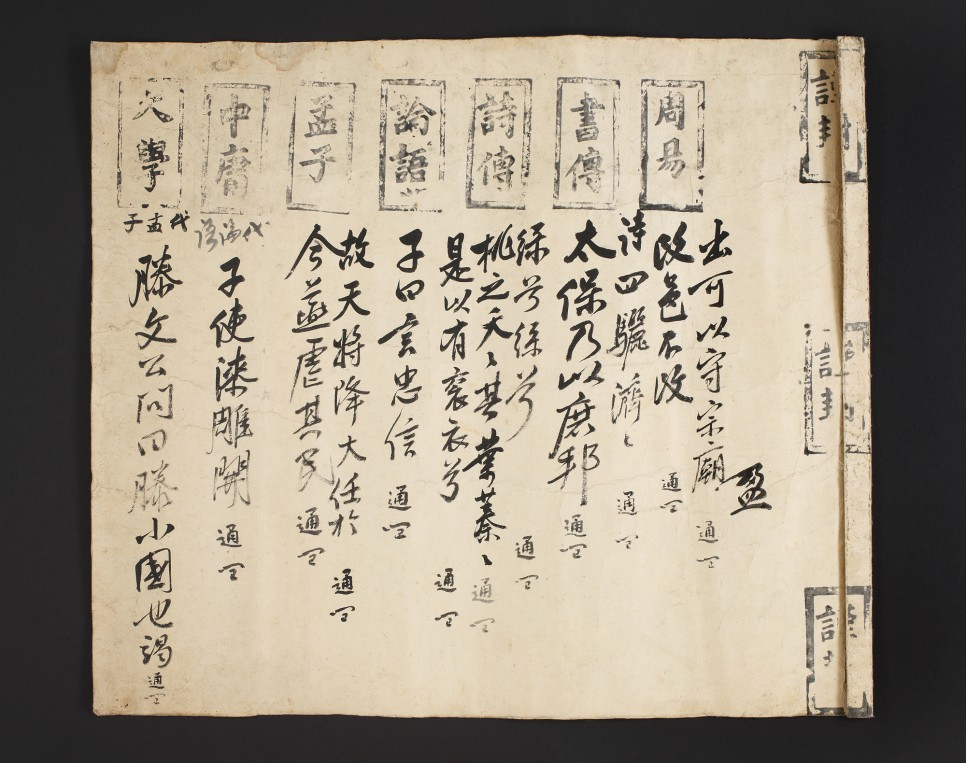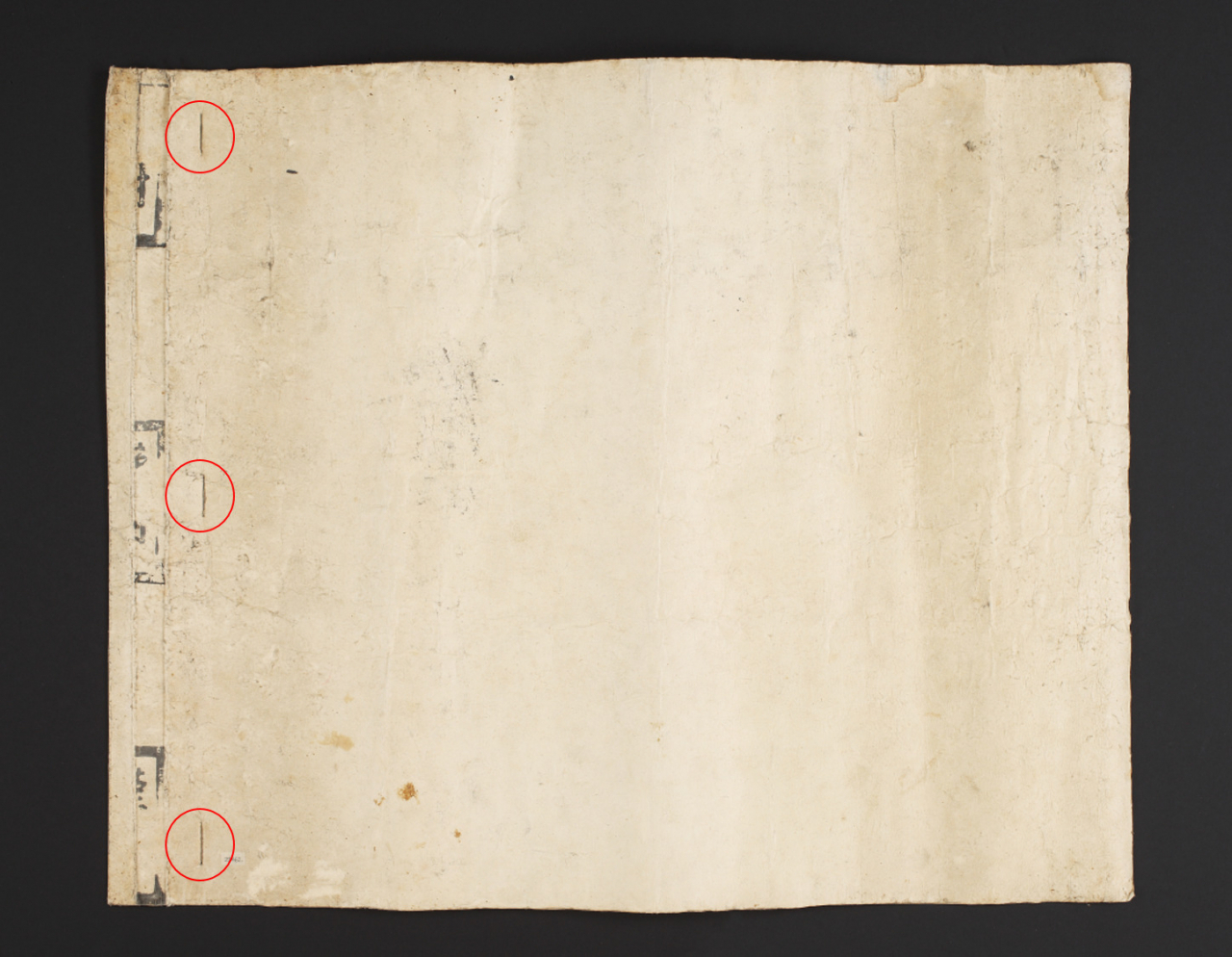 |
Gwanseosigwon for mungwa, written from top to bottom, includes the titles of the texts, questions and scores. The fold on the right concealed the personal information of test takers. (NPMK) |
Throughout Korean history, there has been a deeply ingrained cultural belief that pursuing a career as a public servant is a prestigious endeavor. This cultural ethos can be traced back to the establishment of the "gwageo" system, or public service examinations.
Gwageo was first introduced during the reign of Goryeo's King Gwangjong (925-975) and persisted until 1894 of the late Joseon era.
Despite the retirement of gwageo, which was held every three years, the country still administers civil service exams every year to recruit individuals to government positions.
Among the surviving artifacts documenting the gwageo system, one that stands out is "gangseosigwon," an evaluation sheet for oral exams from the Joseon period.
The existence of oral examinations within gwageo is not widely known due to the scarcity of related documents.
A close examination of the grading sheet on display at the National Palace Museum of Korea's permanent exhibition "Kings of the Joseon Dynasty," two elements come to light: the rigorous implementation of equitable assessment policies and the emphasis on one's memorization capabilities.
Even today, these two elements continue to be of importance in civil service exams.
Acquiring a civil service position still heavily depends on memorization skills, since a significant portion of the exam requires rote memorization. Furthermore, concerns about fairness often emerge following the announcement of examination results, prompting debates and complaints.
 |
Painting of the scene of gwageo in Hamgyeong Providence in 1664 (National Museum of Korea) |
"Since neither voice nor video recordings existed at the time, the only records of oral examination are the evaluation sheets," Moon Eun-kyoung, a researcher at the National Palace Museum of Korea, told The Korea Herald.
There were three types of gwageo: "mungwa," the exam for administrative officials, "mugwa," the exam for military officials, and "japgua," the exam for technical experts.
Within the mungwa category, the exam was divided into two -- "sogwa" for selecting junior officials and an advanced "daegwa" for recruiting high-ranking officials. In addition to the regular triennial exam, "byeolsi" were administered for royal celebratory occasions, such as a royal's birthday, or when necessary. The oral test made up a significant portion of the different gwageo exams.
Moon explained that during the oral exams, applicants were required to randomly select a slip from a bundle of various writings from Confucian classics.
"For example, if you look at gangseosigwon at our museum, you will find a stamped title, ‘Noneo (The Analects of Confucius),’ on it. Underneath, a part of the fifth passage of the chapter ‘Duke Ling of Wei’ is inscribed. The candidate had to recite and interpret the pertinent passage solely from their memory," Moon said.
Another noticeable factor implied is fairness of the evaluation process.
On the right of the test evaluation papers, the space where the candidate's personal information was written have been folded, sealed and tied with a string.
"During the administration of the exam, the test taker was identified by assigned numbers based on the 'Thousand Character Classic,' rather than their actual names. This was to prevent the evaluators' bias and discourage applicants from cheating," Moon said.
Such traces on the test paper demonstrates efforts by the Joseon royal court to fairly judge and recruit talented people, the researcher said, adding that a blind screen was placed between candidates and examiners so they would not be able to recognize each other.
 |
A bundle of oral test evaluation papers shows the papers were folded, sealed and tied with a string (NPMK) |
Starting from the 18th century, records indicate a shift in examination practices.
While only the combined test scores of the assigned seven examiners were kept during the 17th century, each wrote down their own scores in the 18th century, resulting in a more thorough and fair assessment, Moon said.
Three distinct types of gwageo exams featured varying sets of oral questions.
For example, mugwa's oral questions were based on Chinese texts on military tactics and strategies. For japgua, there were questions of astronomy or medicine, which can be viewed at the Kyujanggak Institute of Korean Studies at Seoul National University.
Despite all the measures taken, historical evidence does reveal instances of misconduct by test takers during gwageo. Nevertheless, the gangseosigwon archives act as a testament to the conscientious endeavors rooted in Joseon philosophies, aimed at justly selecting the nation's competent officials.
This is the seventh in a series of articles introducing well-known cultural artifacts from different periods in Korean history. -- Ed.







